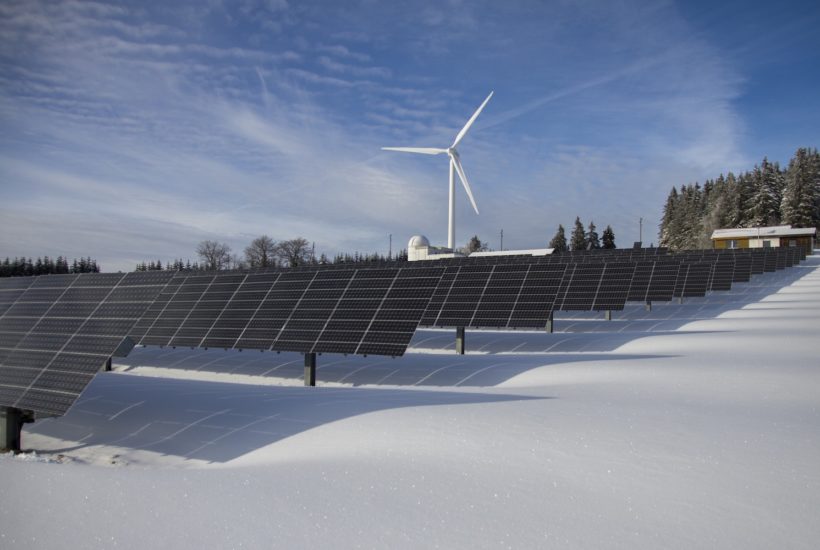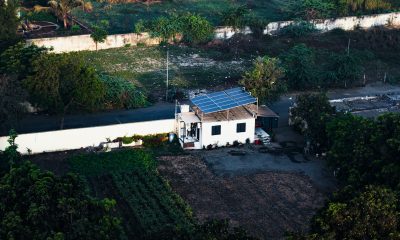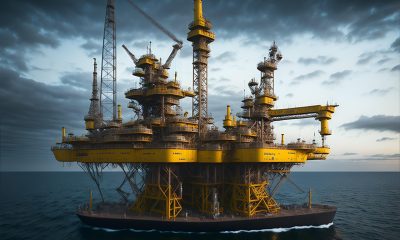Featured
Are we moving towards 100% renewable energy in the coming years?
An IEA proposal to invest $1 trillion annually between 2021 and 2023 will generate massive growth in the renewable energy sector and create up to 27 million new jobs. With other initiatives already underway, such as BNP Paribas’ Green Desk and French based producer Neoen producing 14 countries and growing, there’s a healthy post COVID-19 appetite for green energy investment.

Boosting economic growth without sacrificing the climate, dare I say it? The International Energy Agency (IEA), a United Nations agency based in Paris, has taken up this challenge in a report published on 18 June. The challenge takes the form of a puzzle for governments. Admittedly, with the measures taken to combat the Covid 19 epidemic, greenhouse gas emissions could fall by up to 8% in 2020, or 2.5 billion tonnes of CO2 in less than a year. But once the health situation returns to normal, we could see a spectacular rebound. This is at least what happened after the 2008-2009 crisis, when CO2 emissions reached record levels.
To avoid a repeat of the scenario, the IEA proposes to invest $1 trillion (‘890 billion), or about 0.7% of current global gross domestic product (GDP), annually between 2021 and 2023 to support a sustainable recovery. This would create 27 million new jobs. In concrete terms, this would mean increasing the energy efficiency of buildings, improving electricity networks, extending high-speed train lines, eliminating subsidies for fossil fuels and accelerating the development of renewable energies, particularly solar and wind power…
Stay informed and follow the latest renewable energy announcements making business headlines by downloading our free companion app, Born2Invest.
253 million euros in turnover
The French nugget Neoen did not wait to position itself in this niche. Since 2008, it has been producing and selling renewable electricity either to governments, major industrial players or EDF. “When we created the company, we were told: You arrived too late, the places are already taken, says the CEO Xavier Barbaro, a polytechnicien of his state. Except that at the time, most of the market players were content to go and look for subsidies. Coming from ultra-competitive and demanding sectors such as telecoms or construction, we were convinced that we could develop a more sustainable model: to produce reliable 100% renewable electricity at competitive prices. »
Twelve years later, the goal has largely been achieved. With a turnover of 253 million euros in 2019 and a total capacity in operation and under construction of 3gW spread over 14 countries, Neoen is France’s leading independent renewable energy operator. In France alone, we have installed a storage unit, 16 wind farms and 33 solar power plants, including a 250-hectare plant in Cestas, which produces the equivalent of the consumption of 300,000 people,” says Xavier Barbaro. If we had two large plants like this one in each department, we would cover a large part of the domestic needs of the French population. »
Energy Sovereignty
Tomorrow, will French electricity be 100% renewable? Bertrand Cassoret, professor-researcher at the University of Artois, does not believe so. Reducing the share of fossil fuels in the energy mix, yes, but replacing it completely is another story,” he confides. With wind and solar power, production is linked to the weather. So it’s complicated to rely heavily on it. If we wanted to reach the goal of 100% renewable energy, we would have to divide our consumption by 2 or even 3. However, the economic recovery will require a lot of energy. »
An analysis that Xavier Barbaro disputes: “Today we are not only able to transport green electricity everywhere in the country but also to store it,” he recalls. This was demonstrated in 2017 with Tesla, developing the world’s largest lithium-ion battery in Hornsdale, Australia. Economically, the renewable business has also become much more profitable. In ten years, production costs in solar energy have been divided by 10: “The French also seem ready to change their model. “They are increasingly concerned about climate change and, since the Covid, are becoming aware of the importance of preserving our energy sovereignty. It will certainly not be for 2025 but perhaps for 2035,” he concludes.
3 Questions to…
Philippe Jean, Director of the BNP Paribas business centre in La Défense (Hauts-de-Seine) which houses the Green Desk.
What is the mission of the Green desk, which BNP Paribas set up at the end of 2017?
The Green desk is a centre of expertise responsible for supporting the development of key players in the energy transition, from renewable energy producers to specialists in soft mobility, as well as professionals in the renovation and energy efficiency of buildings. As a single point of entry to all the Bank’s services, it can be involved in project financing, capital increases, IPOs and international development.
What was the impetus for the creation of such a centre of expertise?
Following the COP21 held in Paris at the end of 2015, BNP Paribas committed to play its part in the energy transition, with a target of €15 billion in financing for renewable energies by the end of 2020. The creation of the green desk is part of the same approach.
What are the prospects for development of the sector?
I think we are only at the beginning of the story. To limit greenhouse gas emissions and speed up the energy transition, we will have to produce greener energy, further improve building insulation, reprocess more waste… This will require massive investments. This will require massive investments. We at BNP Paribas are committed to increasingly sustainable financing.
—
(Featured image by Pixabay via Pexels)
DISCLAIMER: This article was written by a third party contributor and does not reflect the opinion of Born2Invest, its management, staff or its associates. Please review our disclaimer for more information.
This article may include forward-looking statements. These forward-looking statements generally are identified by the words “believe,” “project,” “estimate,” “become,” “plan,” “will,” and similar expressions. These forward-looking statements involve known and unknown risks as well as uncertainties, including those discussed in the following cautionary statements and elsewhere in this article and on this site. Although the Company may believe that its expectations are based on reasonable assumptions, the actual results that the Company may achieve may differ materially from any forward-looking statements, which reflect the opinions of the management of the Company only as of the date hereof. Additionally, please make sure to read these important disclosures.

-

 Crypto2 weeks ago
Crypto2 weeks agoRipple Launches EVM Sidechain to Boost XRP in DeFi
-

 Impact Investing6 days ago
Impact Investing6 days agoShein Fined €40 Million in France for Misleading Discounts and False Environmental Claims
-

 Impact Investing3 days ago
Impact Investing3 days agoVernazza Autogru Secures €5M Green Loan to Drive Sustainable Innovation in Heavy Transport
-

 Cannabis2 weeks ago
Cannabis2 weeks agoCannabis Company Adopts Dogecoin for Treasury Innovation

























